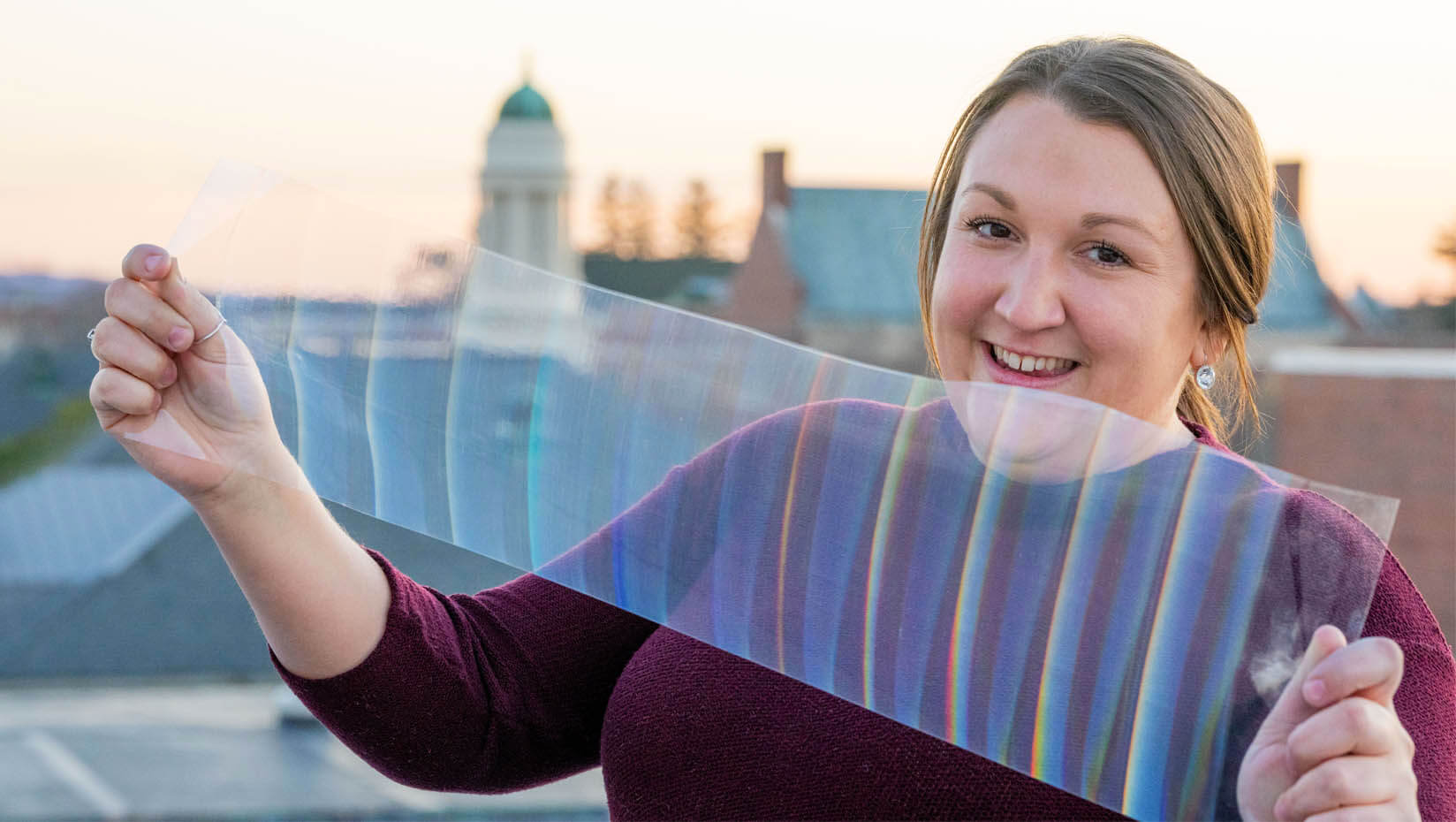
Liza White: Engineering new applications for paper mill products
Growing up in Rumford, Maine, Liza White learned the extent to which paper manufacturers contribute to the rural economies in which they operate. Residents would regularly say “paper is money” in relation to the mill’s importance; they would celebrate its successes and shudder when it struggled.
Changes in global demand have brought both economic uncertainty and opportunity to Maine’s pulp and paper industry. Now as a University of Maine Ph.D. student in biomedical engineering, White is investigating new uses for these companies’ products, which may open new markets and support places like her hometown.
In collaboration with UMaine biomedical engineering associate professor Caitlin Howell, White leads multiple studies into possible biomedical applications for products manufactured by Sappi North America, which own and operate the Somerset Mill in Skowhegan, Maine and the Westbrook Mill in Westbrook, Maine.
“It’s nice to be able to explore using paper in different ways than we’ve always thought of,” says White, who also is a student in the Graduate School of Biomedical Science and Engineering. “As we’re moving more toward digital, there’s more stress for paper companies. Being able to explore different avenues in which we can use traditional, well-established methods for other things really is compelling to me.”
White’s primary research with Sappi involves determining whether the film that it manufactures for imprinting texture patterns onto textiles can be used for water quality testing. She and Howell are working collaboratively with machine learning and water quality assessment expert Amy Mueller, assistant professor of civil and environmental engineering at Northeastern University, as well as her Ph.D. student Albert Navato. The project is supported by a joint seed grant from UMaine and Northeastern.
The clear film can diffract a direct source of light, which then takes the form of a rainbow. White theorizes that when contaminated water droplets interact with the film, the rainbow would change in various ways, such as in color concentration and intensity. Exactly how the rainbow transforms would be determined by the specific contaminants, she says. The extent of contamination and specific pollutants could then be identified by taking and examining photographs of the rainbow spectra.
If successful, this process could reduce the cost and time for water testing by allowing municipalities, government agencies and other organizations to perform it in-house, instead of sending samples to a lab. White says she hopes to eventually develop sensor technology and artificial intelligence that could eliminate the need for sample collection all together by testing the water on-site, analyzing it and sharing results with users.
Using a seed grant from NASA through the Maine Space Grant Consortium, White also is studying how this application could be used for hydroponics and growing plants in space.
“This technology itself has multiple applications, and we’re just really exploring how this texture interacts with different contaminants in different ways to actually see what the end application could really be. Because there are a lot of different ways we could go with this,” White says.
White has been studying at UMaine since 2017. As an undergraduate majoring in biomedical engineering, she didn’t know exactly what to study until she listened to a guest presentation by Howell about her research in an introductory biomedical engineering course taught by Michael Mason that year. At that moment, White knew she wanted to pursue a biomedical engineering degree and work in Howell’s lab.
Since 2018, White has worked on several projects. She collected data for an initiative to improve sample handling and manipulation using folded paper with liquid-infused polymer surfaces. As a graduate student, she worked on a project to develop a novel microfluidic water purification system, which also involved Sappi.
It was Howell who motivated her to pursue a master’s degree at first, then convinced her to switch to a Ph.D. program. As another researcher from a small town in Maine, White says Howell inspires her to work hard in her research and shows her what she is capable of achieving.
“All of Dr. Howell’s projects, I feel, are really interesting,” White says. “I don’t think there’s a project that she does that I don’t love.”
When she isn’t conducting research, White works as a per diem emergency medical technician for Northern Light Medical Transport and Emergency Care and volunteers with the University Volunteer Ambulance Corps. During her undergraduate studies, she joined the Phi Mu sorority and served as its president for one year, and played intramural sports.
Throughout much of her collegiate career, White has also worked with the Maine College Circle, an organization that encourages and helps youth from rural communities pursue higher education, including sharing her experiences with secondary students in Rumford.
“I am going to visit my hometown in January to talk to some middle school students about STEM, and specifically to show them that paper can be used in other ways. The hope is to inspire students to want to explore STEM more” White says. “In rural Maine, not a lot of students get pushed to go to college. They don’t always see a need for it. I want to show them that it is possible, and that their parents don’t need to make a bunch of money to go to college.”
After she earns her Ph.D. in 2025, White says she hopes to work in industry-related research and development.
“I’m very open to most opportunities,” she says. “All I care about is that what I’m doing makes people’s lives better.”
Contact: Marcus Wolf, 207.581.3721; marcus.wolf@maine.edu
